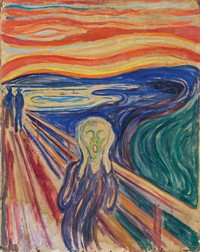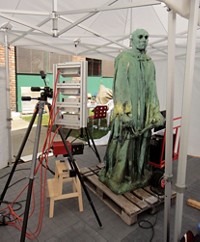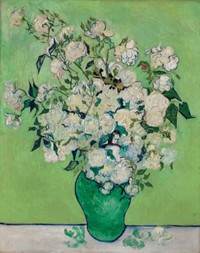Advertisement
Grab your lab coat. Let's get started
Welcome!
Welcome!
Create an account below to get 6 C&EN articles per month, receive newsletters and more - all free.
It seems this is your first time logging in online. Please enter the following information to continue.
As an ACS member you automatically get access to this site. All we need is few more details to create your reading experience.
Not you? Sign in with a different account.
Not you? Sign in with a different account.
ERROR 1
ERROR 1
ERROR 2
ERROR 2
ERROR 2
ERROR 2
ERROR 2
Password and Confirm password must match.
If you have an ACS member number, please enter it here so we can link this account to your membership. (optional)
ERROR 2
ACS values your privacy. By submitting your information, you are gaining access to C&EN and subscribing to our weekly newsletter. We use the information you provide to make your reading experience better, and we will never sell your data to third party members.
Analytical Chemistry
Shining Light On Art
Conservators use intense light sources for everything from characterizing pigments to removing lichens
by Celia Henry Arnaud
March 30, 2009
| A version of this story appeared in
Volume 87, Issue 13

ART CONSERVATION is undergoing a light-mediated upgrade, speakers at a symposium at Pittcon 2009, in Chicago, said earlier this month. Conservation scientists and conservators are using lasers and other intense sources of illumination for tasks ranging from characterizing art materials to cleaning priceless cultural artifacts.
COVER STORY
Shining Light On Art
A key application of lasers in art conservation is for figuring out what materials an artist used so an artwork can be conserved properly. Gregory D. Smith, assistant professor of art conservation at the State University of New York, Buffalo, described the use of Raman microscopy to characterize pigment degradation in paintings. One important pigment is lead white, 2PbCO3•Pb(OH)2, which is found in many classes of paint. Lead white is one of the earliest and most common synthetic pigments. Although it is usually stable, reactions with sulfides can cause white features and highlights to turn black, Smith said. The sulfides can come from pollutants in the air or other pigments on an artwork.
When a white pigment darkens, Raman microscopy can identify the original pigment and the dark degradation product, thus helping conservators choose the best remedy for restoring the color. In some cases, illuminating a painting with the Raman microscope's laser can induce a photooxidation of the black particles that restores the original color, Smith said. In such circumstances, the laser might prove easier to control than wet chemical oxidation and have less potential for inadvertent damage, Smith noted.
However, chemical analysis with intense light sources need not be restricted to the art conservation laboratory. Demetrios Anglos and coworkers are developing instrumentation for taking laser-induced breakdown spectroscopy (LIBS) to conservators and archaeologists in the field. Anglos is a researcher at the Institute of Electronic Structure & Laser. Part of Greece's Foundation for Research & Technology, in Heraklion, Crete, the institute hosts a broad research program that since the early 1990s has been developing laser-based methods for diagnostics and restoration of artworks and antiquities.
In LIBS, a nanosecond-pulsed laser ablates a surface, creating a luminous plasma plume that yields an elemental emission spectrum. The Anglos group has succeeded in making a fully portable LIBS instrument that fits in a suitcase and that they have used to probe archaeological artifacts and art objects. For example, they found that a heavily corroded rivet from a Minoan dagger contained silver on its surface, revealing that the dagger had a decorative coating that had degraded. Likewise, LIBS enabled classification of a series of bronze and gilded bronze objects at Syria's National Museum, in Damascus.
In addition to chemical characterizations, laser light sources can also provide physical data on an artwork. Jens Stenger, associate conservation scientist at the Harvard Art Museum, and his colleagues use three-dimensional optical coherence tomography (OCT) to dig below the surface of an artwork. In OCT, echoes from a near-infrared laser pulse provide depth profiling of an object.
OCT allows Stenger to look at features that are obscured by the paint layer, such as a drawing underneath. He is also using OCT to provide unique 3-D profiles of the punch marks that early Italian Renaissance artists used to provide texture to gilded areas of their paintings. Punch marks can be used as an investigative tool in art history to identify which workshop made particular paintings.
Lasers also make excellent cleaning tools for artwork. Richard A. Palmer, an emeritus chemistry professor at Duke University, has worked with Duke art conservator Adele de Cruz and others to understand the mechanism of a method for cleaning surface contamination with an erbium-doped yttrium-aluminum-garnet (Er:YAG) laser. The Er:YAG emission is a particularly efficient wavelength because it coincides with an absorption band of water. Ambient moisture is sufficient to cause microsteam distillation, in which the laser pulses heat and vaporize water rapidly on the surface, carrying away contaminants such as wax and grime.
Chemical analysis with intense light sources need not be restricted to the art conservation laboratory.
LASER ABLATION of biological material, particularly lichens, which are symbiotic associations of fungi and algae, involves a different mechanism. When the Er:YAG laser pulse hits lichens, a pulse of bright white light accompanies the ablation of the organism. As determined by infrared spectroscopy, gas chromatography-mass spectrometry, high-performance liquid chromatography, and ultraviolet fluorescence of the ablated material and of the surface before and after the laser treatment, the lichen cellular structure is destroyed by the laser interaction, and the remaining debris is completely lifeless. Emission spectra of the white flash indicate that it is blackbody radiation from some of the ablated material that has been heated to approximately 3,000 K. The particularly violent interaction of lichens with the Er:YAG laser is apparently a result of their thick cell walls, which have a high concentration of polysaccharides and thus O–H bonds.
Although light can be used to characterize and treat artwork, light can also be an enemy, causing perceptible fading when art is exposed to too much. James R. Druzik, a senior scientist at the Getty Conservation Institute, in Los Angeles, is using intense broadband light sources to determine the kinetics of color changes and help establish appropriate display conditions for vulnerable pieces of art, using a technique called microfadeometry.
In microfadeometry, analysts focus 1 lumen of light from a broadband xenon lamp onto a 400-µm spot of the artwork. Exposure on the order of 10 minutes causes fading at the spot, which is monitored with a probe that converts the reflectance spectrum to real-time color coordinates. Druzik uses the spectrum to calculate a time series of color changes and the amount of time before such changes will result in a "just-noticeable difference." He uses the method to determine the light sensitivity of paintings and photographs so he can recommend appropriate light restrictions.
For example, Druzik used the method to examine the 1916 Georgia O'Keeffe watercolor "Sunrise and Little Clouds," which has never been displayed and is in pristine condition, he said. The most light-sensitive portion of the painting is the red sky, which contains vermilion and an unidentified red organic pigment, he said.
These intense light sources will play a growing role in art conservation, helping us to better understand and preserve art, Druzik and others at the Pittcon symposium said.





Join the conversation
Contact the reporter
Submit a Letter to the Editor for publication
Engage with us on Twitter